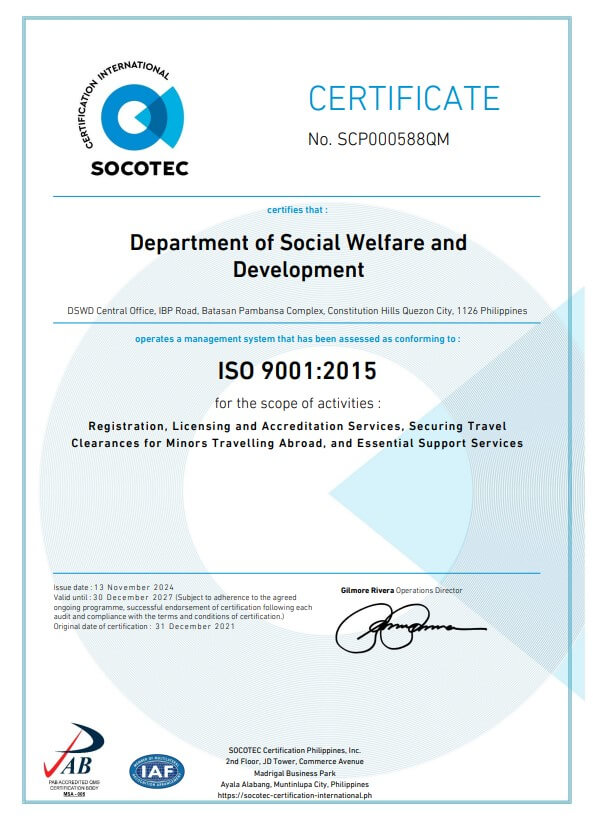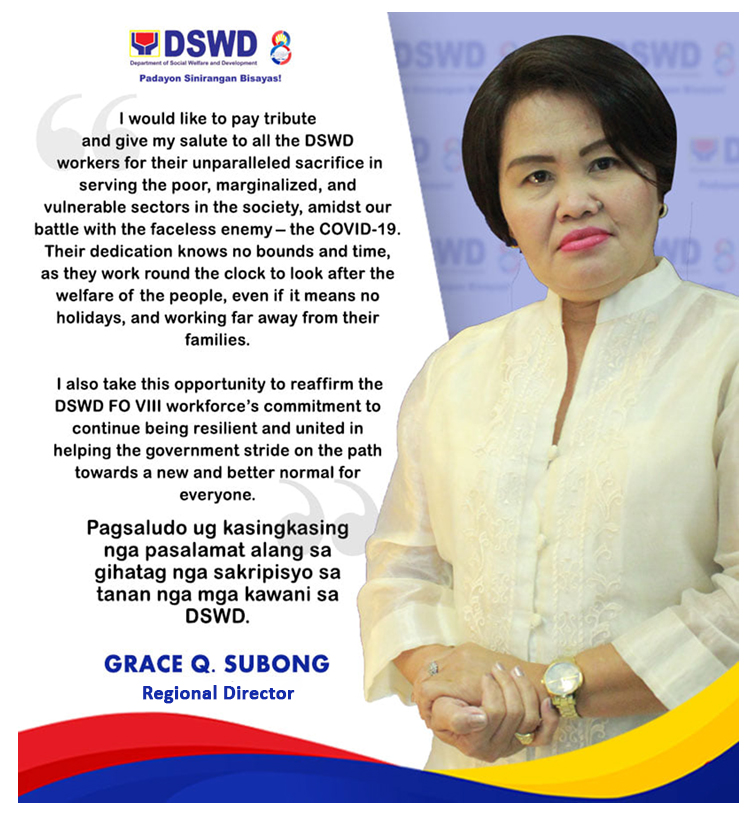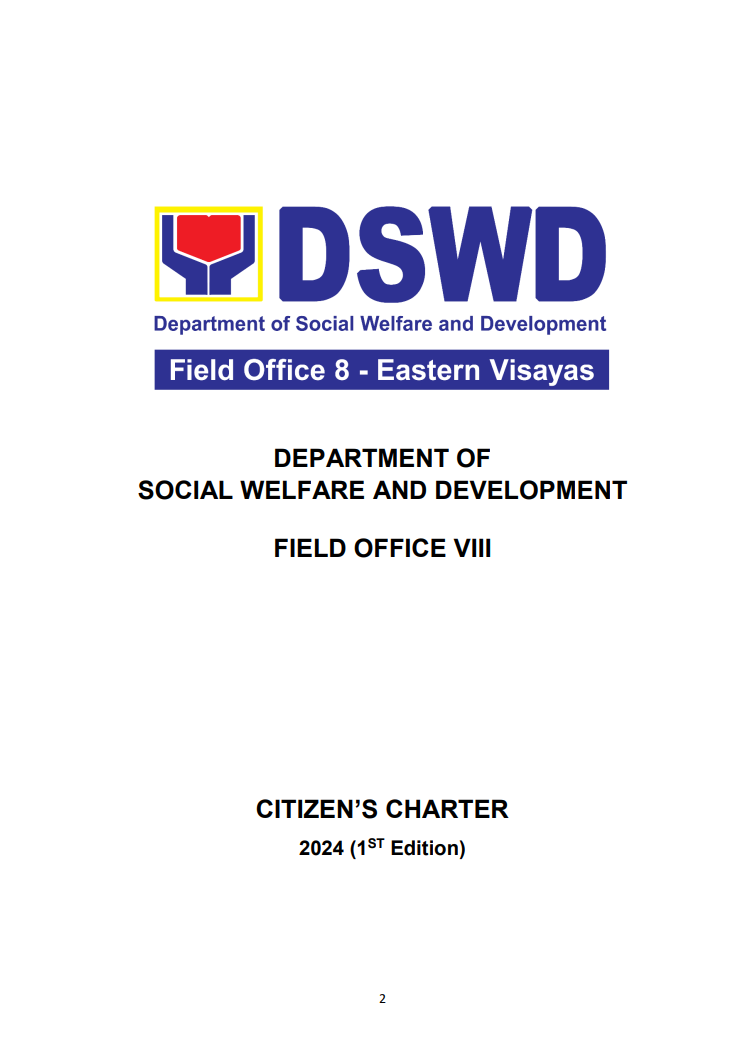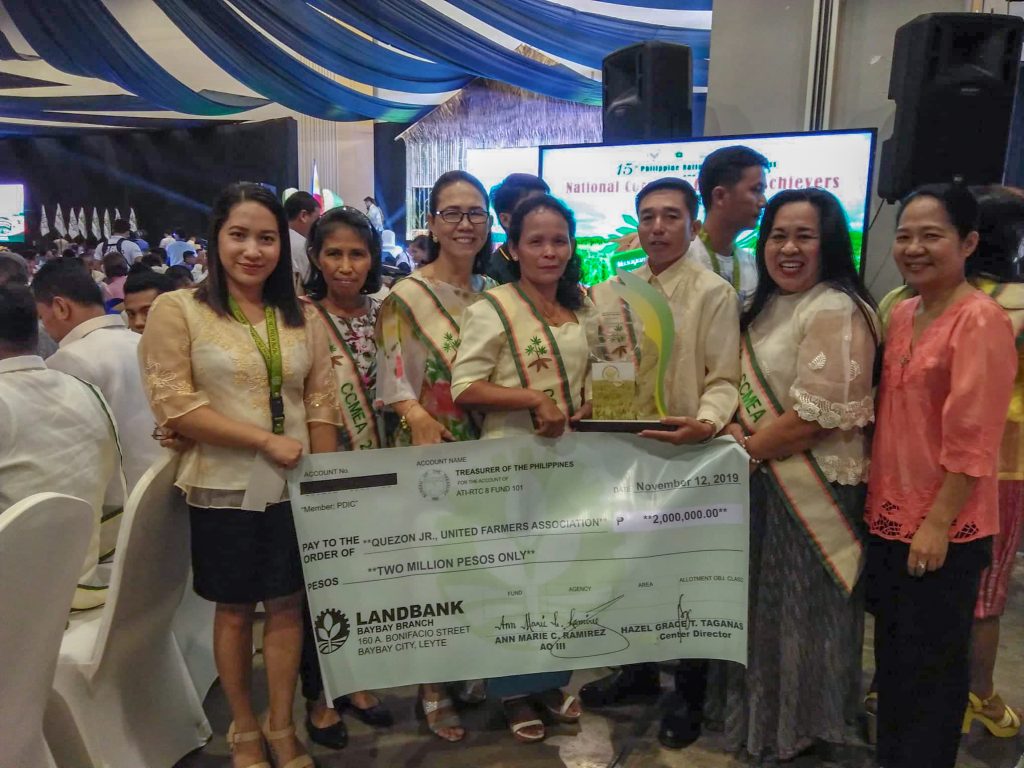
The Quezon Jr. United Farmers Association (QUEUFA), composed of poor farmers who were heavily affected by deadly Typhoon Yolanda, won 1st runner-up in the Cassava Cluster Management Excellence category during the 3rd National Cassava Cluster Management Excellence Award (CCMEA) held in Iloilo Convention Center on November 12, 2019. The group from Ormoc City received Two Million (P2,000,000.00) cash prize and a special trophy.
QUEUFA, assisted by DSWD-Sustainable Livelihood Program (SLP) and other stakeholders through the Yolanda Rehabilitation and Reconstruction Program (YRRP) funds, is now a Cassava Consolidator and Assembler in the entire city of Ormoc and nearby towns. With the augmentation capital of P400,000 provided by SLP, the association has now a higher purchasing power that enable them to directly sell their products to big corporations who are venturing in agrivet feed suppliers. The group has an open contract with B-MEG of San Miguel Corporation since January 2019. This opportunity of being the only cassava consolidator assembler in Ormoc City boosts the income of the association members.
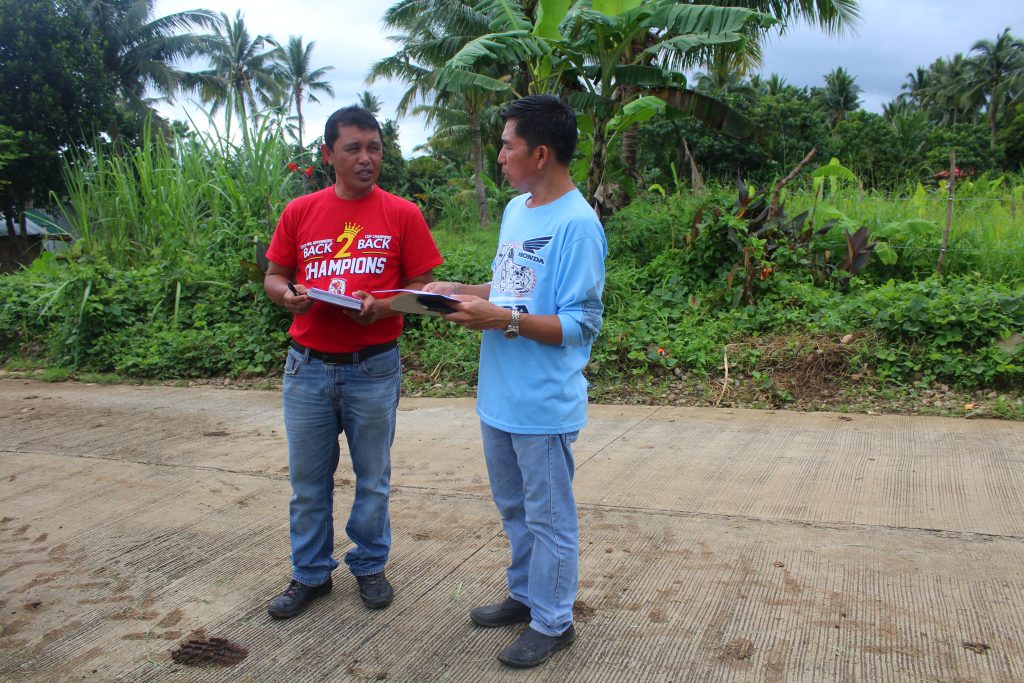
Other key players of their Cassava Value Chain Projects are the CARE Philippines, which provided various relevant and useful trainings for officers and farmer-members for cassava value chain to adopting the Community Based Enterprise Development (CBED) scheme; OXFAM for the provision of building for production processing area and technical assistance; Department of Agriculture (DA) for the provision of cassava chipper, cassava granulator, and tractor 4w; Fatima Multi-Purpose Cooperative (former buyer of their dried cassava chips); the Local Government Unit of Ormoc City for provision of technical assistance; and San Miguel Corporation as buyer of cassava granules and chips to be processed into pellets and feeds to be supplied to agri-feeds suppliers.
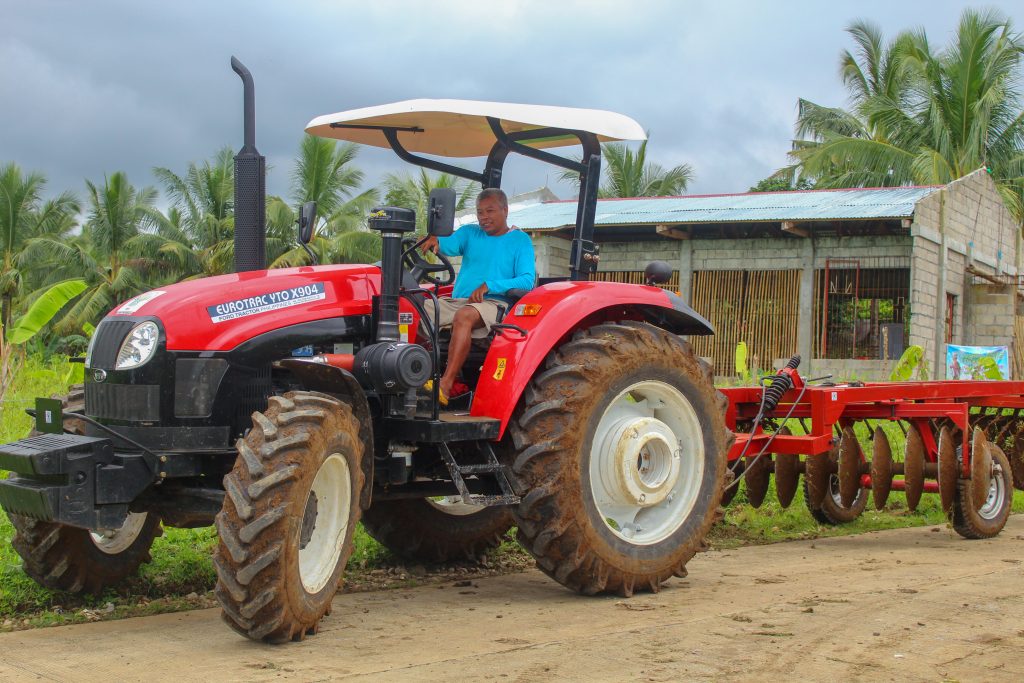
CASSAVA: PROFITABLE AND SUSTAINABLE CROP
Before Super Typhoon Yolanda struck the area, the farmers were venturing on coconut farming specifically on Tuba Gathering (or Pagsanggot), which was the main source of livelihood in their barangay. But, according to QUEUFA President Julieto Yahot, the people suffered a major blow when their coconuts were harshly wiped out by Typhoon Yolanda. This tragedy pressed the association members to seriously consider cassava as alternative to coconuts. Eventually, the association members discovered that cassava is not just profitable, but a disaster- resilient crop that could withstand drought and strong rains.
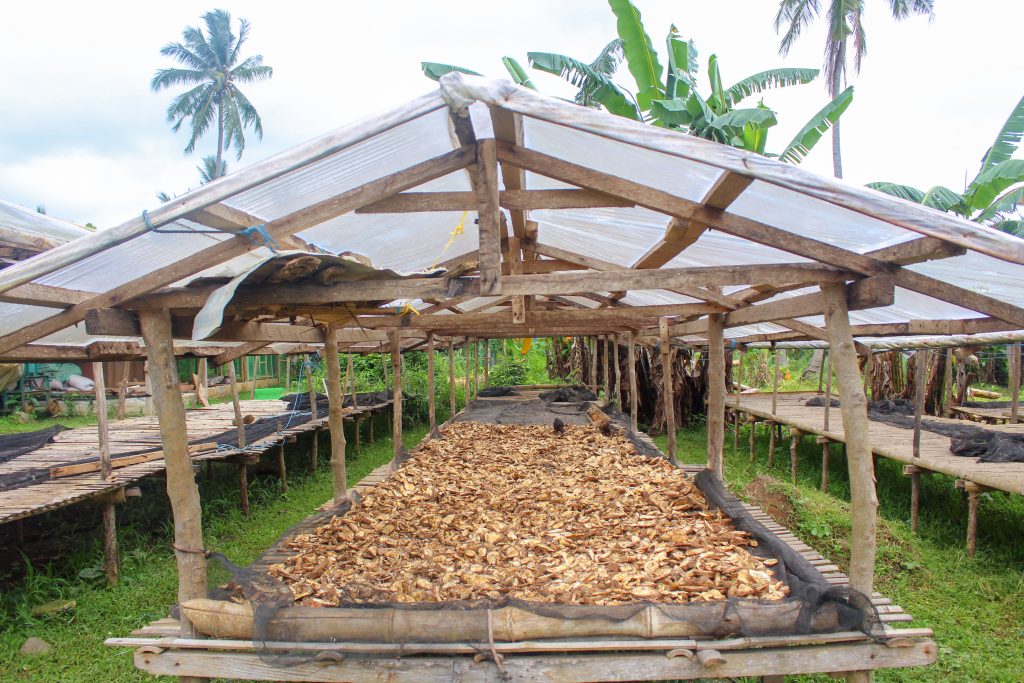
Basically, cassava (known locally as Balanghoy) has a number of attributes that make this crop attractive for health and economic reasons. According to agricultural experts, cassava lends itself to many high value products which can substitute for rice, maize, and other products. It can be used both for animal feeds (dried cassava chips) and human consumption (cassava flour and mash). Furthermore, cassava has been chosen as a major staple crop due to its capacity to become raw material for an array of processed products. Considered as a high-value crop, there is undoubtedly a growth in demand for cassava that eventually contributes to agricultural transformation and economic growth in the Philippines.
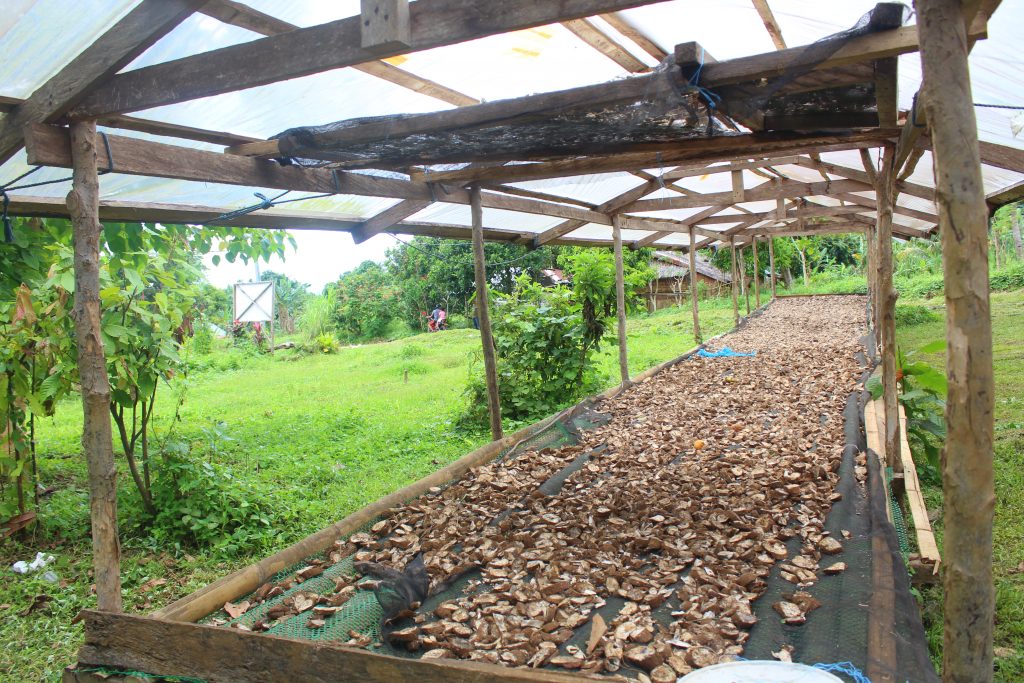
Based on the latest monitoring conducted by SLP Technical Officers, the association has already diversified the uses of their cassava harvest and other crops. They now produce by-products such as cassava cake, cassava chips, ginger-turmeric coffee, camote juice, yellow corn pancake flour, among others.
These collaboration efforts with NGAs, NGOs, and LGU catapulted QUEUFA to succeed and bagged a major award in the recently-concluded national competition. All the stakeholders contributed to their victory. The association was also guided by Imelda Remollo from the City Agriculture Office in packaging their nomination for the CCMEA.

The cassava congress, organized by DA, is an annual activity that serves as a venue for various stakeholders in cassava industry to gather and discuss the current issues about cassava industry, share best practices, showcase modern form equipment technologies and forge market linkages. It is highlighted with conferment of national top performing Local Government Units (LGUs) and stakeholders in producing quality cassava support.
The nominees of the said competition were assessed by a panel of evaluators from national government agencies like Department of Agriculture and Agricultural Training Institute (ATI) based on their performance in the promotion and development of the cassava sector in their area giving premium to sustained production of safe and quality corn grains and adoption of good agricultural practice by the farmers they serve or support. With Noel Villones

